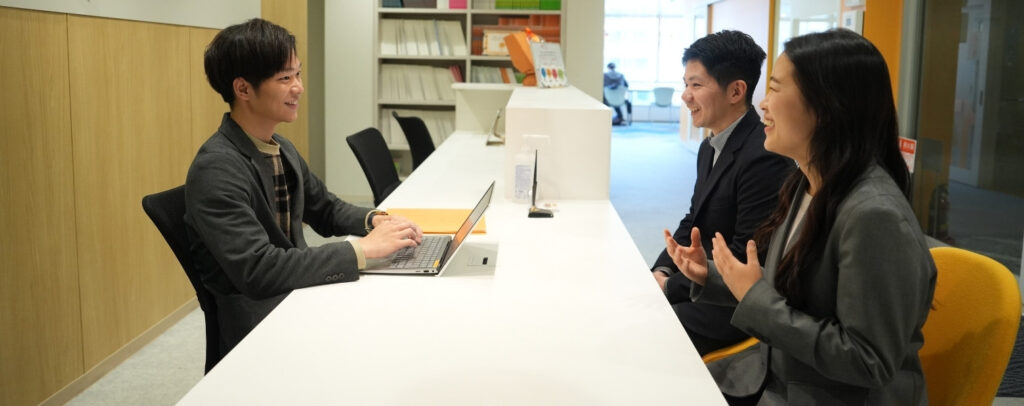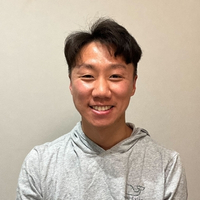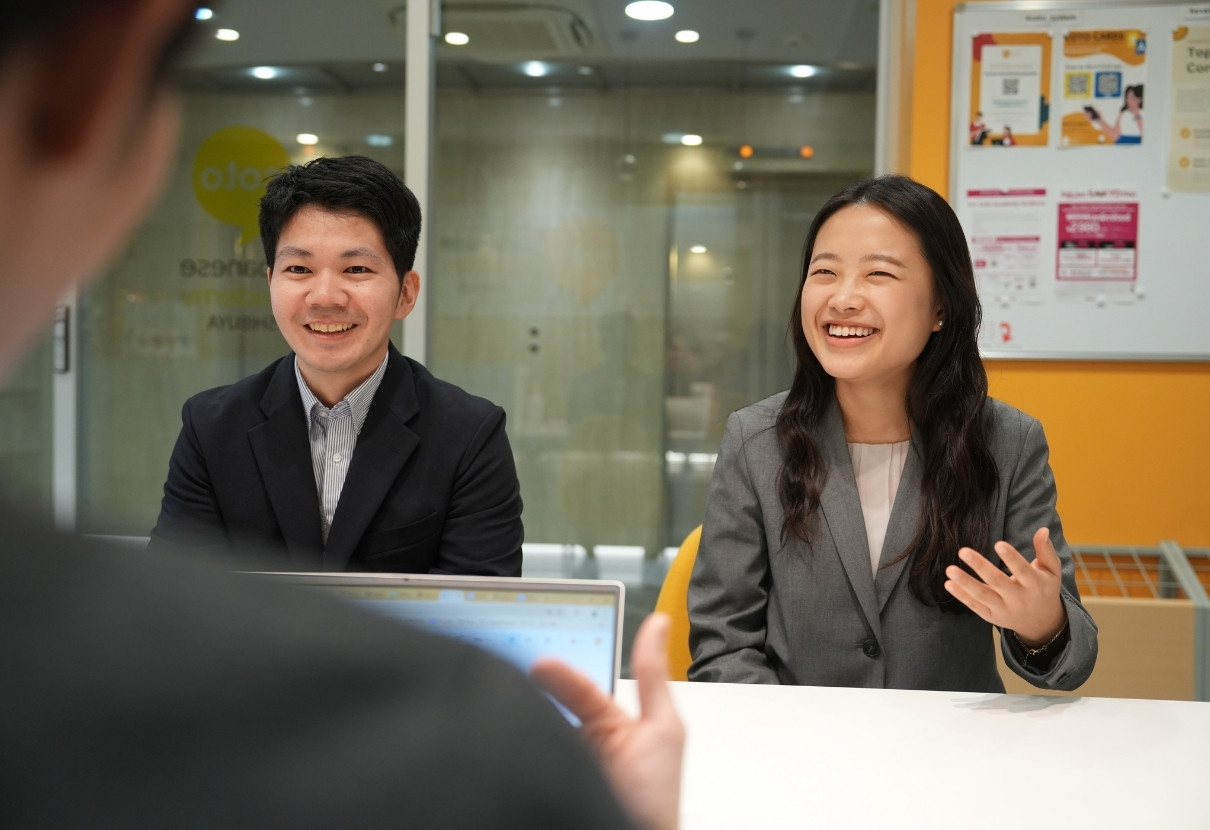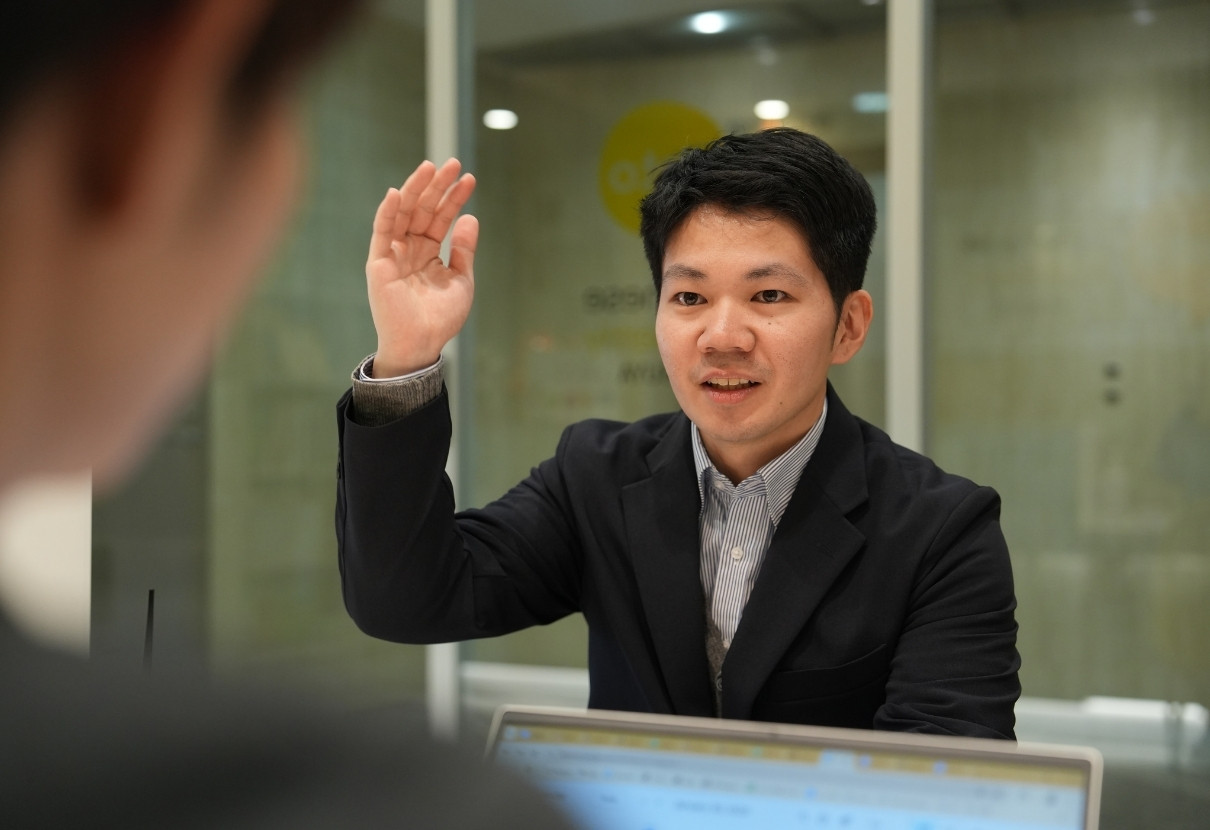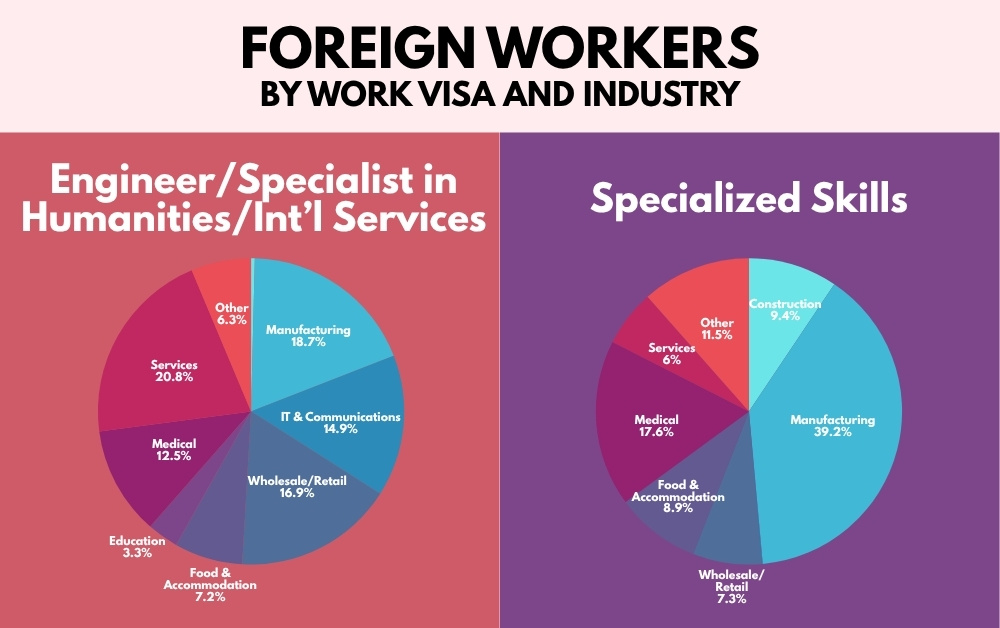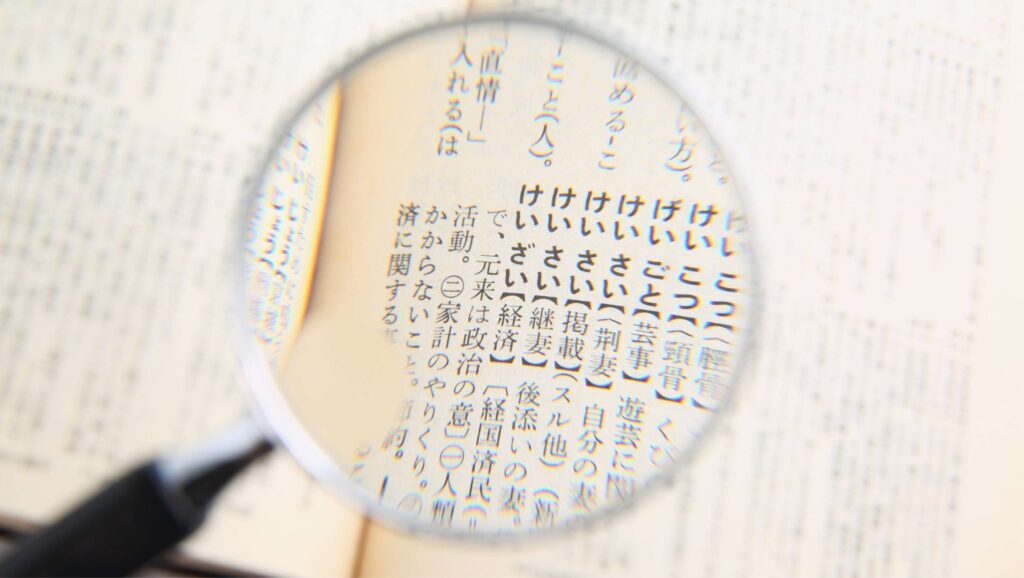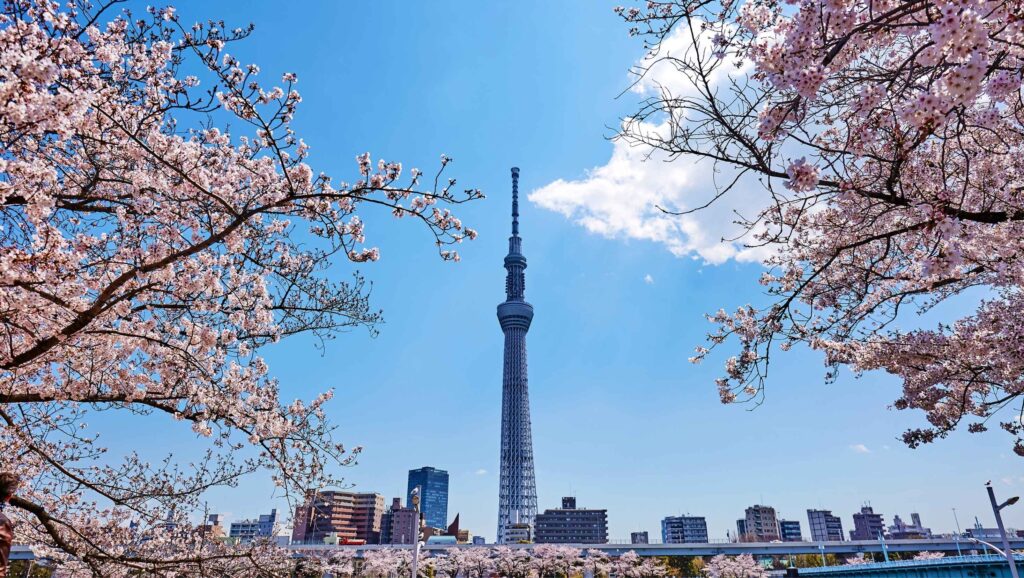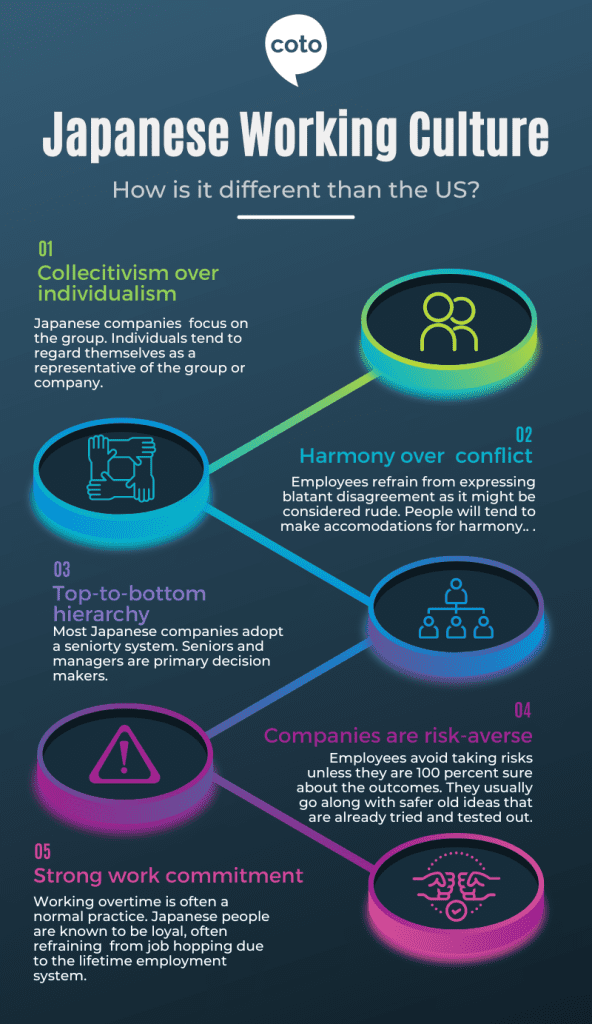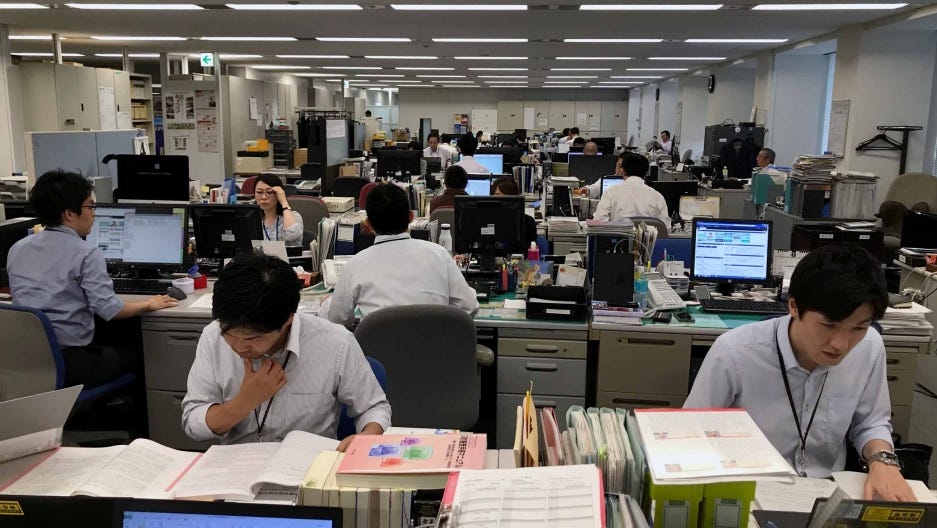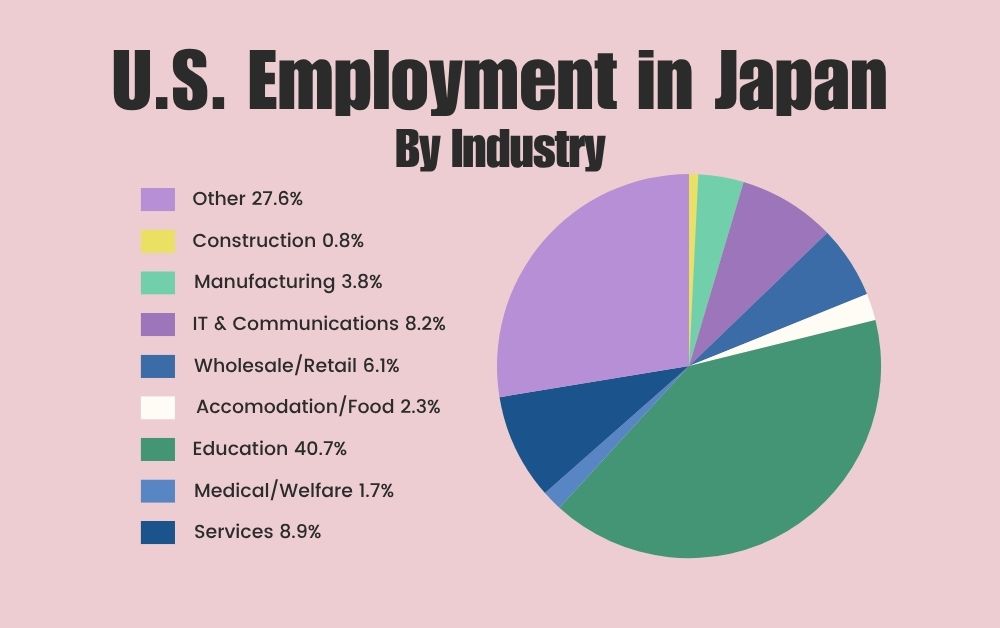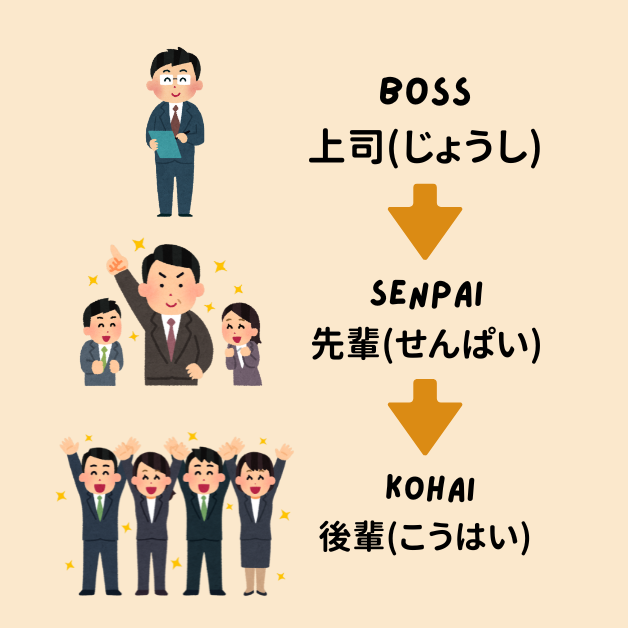It’s a typical weekday at the office when you receive an email from the hiring manager at your dream company: they’re offering you the position you’ve always wanted. Congratulations! Now, there’s just one thing left to do: resign from your current job in Japan.
The good news is that Japan’s traditional postwar expectation of lifetime loyalty to one company is fading. While etiquette still matters, today’s workforce is more mobile, and changing jobs is far more common than it used to be.
Don’t get too excited yet. Whether you’re from an international startup or a traditional Japanese company, there are certain employment Japanese protocols (and guidelines) to follow when you plan to quit your job in Japan. After all, you want to resign properly and leave on good terms to keep your future career prospects intact.
Want to fast-track your career in Japan? Coto Academy’s 3-month Business Japanese Course is designed to help you master keigo (business Japanese) and improve workplace communication skills. Gain the confidence to speak professionally with colleagues and clients, navigate meetings, and open up new career opportunities!
What you need to know before quitting your job in Japan
Though many Japanese workers no longer follow the “lifetime employment” system, some traditional Japanese companies might react to your resignation notice the wrong way.
In some cases, employers may take your resignation personally, discourage you from leaving, or even pressure you to stay. Because of this, a unique solution has emerged in recent years: taishoku daiko (退職代行), or “retirement/resignation agencies.” These services act on your behalf to handle the resignation process, notifying your company, returning equipment, and ensuring you’re protected under labor law.
While controversial to some, they’re becoming increasingly popular, particularly among younger workers who want to avoid confrontation.
While it’s very rare for a company to outright “reject” your resignation, this kind of situation typically only occurs at what’s known in Japan as a “black company,” or workplaces with exploitative or toxic practices. That said, it’s always wise to check your company’s internal resignation policies and guidelines before taking any bold steps.
Read More: Working In Japan: How to Find a Job in the Japanese Economy
What happens to your visa when you quit your job
If you’re working in Japan on a work visa, such as the Engineer/Specialist in Humanities visa, your visa status is not automatically tied to a specific employer in the same way a student visa is. This means your visa does not immediately become invalid when you change or quit a job. However, there are important rules to follow:
- You must notify the Immigration Bureau within 14 days of changing your employer or job status.
- Your new job must be compatible with the activities allowed under your visa type. For example, if you originally came as an English teacher under an Instructor visa, but you want to switch to a sales position, you would need to apply for a change of status of residence (e.g., to Specialist in Humanities/International Services).
- Your visa remains valid as long as you maintain employment in the same field and your visa status is properly updated.
For example, if you initially came to Japan on an Instructor visa as an English teacher and then switch to a sales position, you may need to apply for a change of status of residence (for example, to a Specialist in Humanities/International Services visa) to reflect your new job responsibilities.
It’s also essential to confirm that your new company can sponsor or renew your visa when it expires to avoid any legal complications or risks of deportation.
If you’re unsure about your specific situation, consulting directly with the Immigration Office or an immigration specialist is always the best course of action.
When is the earliest you can submit your resignation to a company in Japan?
Considering the actual handover process (finding new candidates and delegating your current tasks), it is recommended to announce your retirement one month in advance.
This is not the legal requirement, though. The general rule is to hand in your resignation letter two weeks before your desired last day. This is according to the Japanese labor law, but policies vary from one company to another.
It can also boil down to your employment type. If you are a regular employee, a two-week notice is fine, but some companies may enforce a 3-month notice for fixed-term employees.
Documents to submit for quitting a job in Japan
For legal protection, it’s best to always submit your resignation in writing. There are three main documents you can use to formally quit your job in Japan: a resignation letter (退職願, taishoku negai), a resignation notice (退職届, taishoku todoke), and a retirement notice (辞表, jihyou).
What’s the difference between a taishoku todoke and taishoku negai?
To put it simply, a letter of resignation (退職願 or taishoku nega) is a document requesting your retirement. This may be rejected by your company. A retirement notice (退職届 or taishoku todoke), on the other hand, notifies the company of your decision regardless of whether or not they refuse it.
Yes, they are two different things. To understand what separates a letter of resignation and a resignation notice in Japanese culture, take a look at their kanji.
- Letter of resignation: 退職願 (taishoku nega)
- Retirement notice: 退職届 (taishoku todoke)
Both Japanese words are similar, with the only difference being the end kanji character. The kanji 願 (nega) means ‘wish’, while the kanji 届 (todo/todoke) means ‘notification’ or ‘registration’.
It is rare for a company to withdraw an employee’s letter of resignation. In general, it doesn’t matter which one you submit as both are based on the same intention.
If you are in doubt, you can ask directly to your employers directly about it. Some companies in Japan may have a specific resignation letter format and process for submitting the formal notice.
What is a 辞表 (jihyo)?
A 辞表 (jihyou) is a formal “retirement notice” or “letter of resignation” typically used by executives, company directors, or high-ranking employees in Japan when they resign from their position.
For most regular employees, 辞表 (jihyou) is not commonly used; instead, they submit a 退職願 (taishoku negai) or 退職届 (taishoku todoke).
Things to prepare before you quit your job in Japan
1. Give proper notice to your employer or manager (1-3 months before)
For a Japanese company, a face-to-face meeting with your immediate supervisor one to three months in advance is the ideal benchmark. If you’re working in a niche industry, the company may not be able to arrange for a successor and have enough time to take over your duties. One month gives your managers — and yourself — plenty of time to manage a smooth job transition.
At this stage, a physical or written resignation notice isn’t always legally required, but it’s common courtesy to submit one so your employer can prepare for your departure. That said, the earlier you hand in your resignation letter, the better it is for everyone involved.
If you work with a Japanese team, be sure to use Japanese keigo when you talk to your managers. You want to keep things professional and polite.
2. Follow up with an official letter of resignation (2 weeks to 1 month before)
From here, follow up with an official letter of resignation. If you’re working at an international company or reporting to a foreign supervisor, you can proceed to submit the letter in English (although, again, always check with your boss!).
Similar to English resignation letters, there are no rules on how to write a Japanese retirement notice as long as the declaration of intention to retire is made.
However, it can still be daunting to write your letter in Japanese. MyNavi provides several great templates.
You can either write them horizontally or vertically.
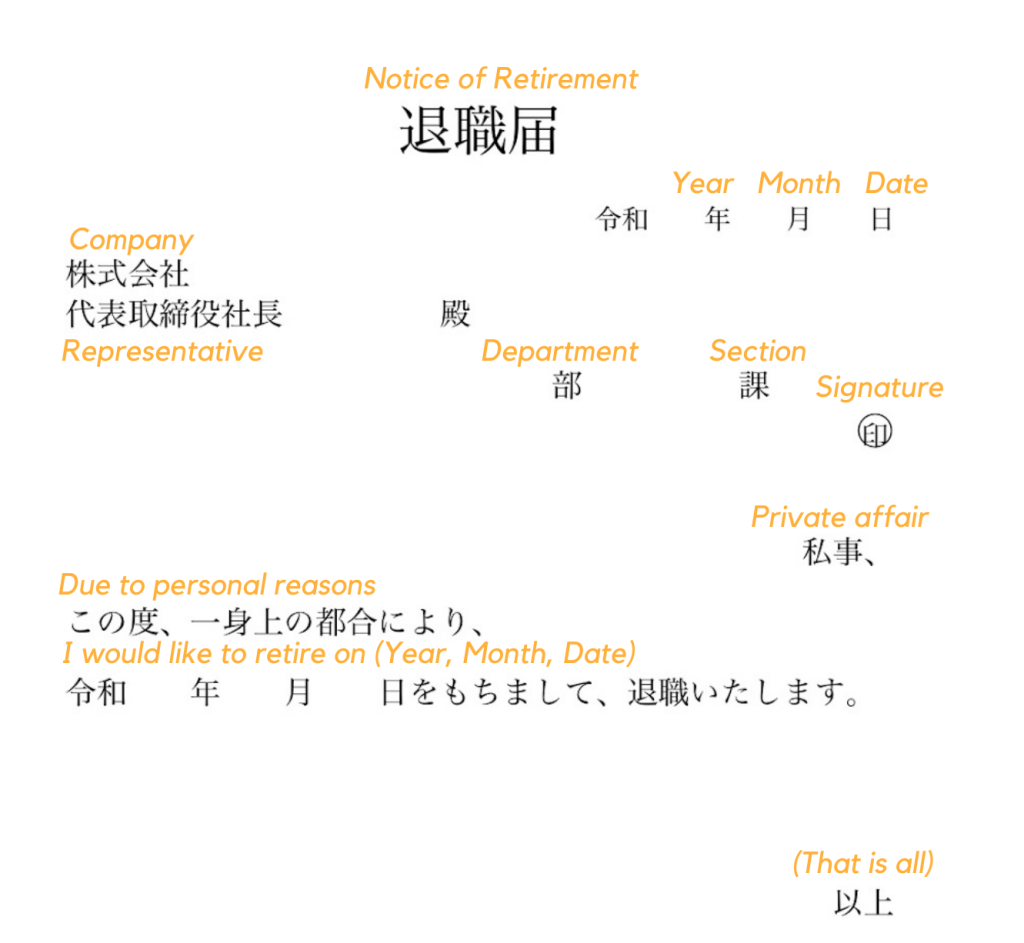
退職届け (taishoku todoke)
Resignation Letter
令和〇年〇月〇日 (reiwa (year) nen (month) gatsu (day) nichi)
The actual submission date
株式会社 (kabushiki gaisha)
Company name
代表取締役 (daihyou torishimariyaku)
Name of your superior or representative
〇部〇課 (section) bu (role) ka)
Section and role followed by your name. It is considered desirable to sign your name by hand and have the letter sealed with a Japanese personal stamp (印鑑 or inkan).
私事 (watakushi goto)
Private affairs. 私事 (watakushi goto) can also be replaced by 私儀 (watakushigi) as it has the same meaning. You may also write 一身上の都合により (isshinjō no tsugo ni yori), which means “for personal reasons”.
この度一身上の都合により、令和〇年〇月〇日をもって退職致したく、お願い申し上げます
Kono tabi ishhinjou no tsugou, reiwa (year) nen (month) gatsu (day) nichi wo motte taishoku itashitaku, onegai moushi agemasu).
I announce that I have decided to leave my current position on (year) (month) (date).
When you are forced to resign, you may want to change the sentence a bit. Under that circumstance, never write 私事 (watakushi goto) or 一身上の都合により, as the company and Japanese government may view your retirement as your own decision. This can be the difference between on-time and delayed unemployment benefits.
Instead, if there is ever the unfortunate case where you are forced to quit, write these reasons:
退職勧奨に伴い (Taishoku kansho ni tomonai)
Due to retirement recommendation
部門縮小のため (Bumon shukusho no tamo)
Due to department reduction
3. Prepare your resignation by making handover materials (3 days to 1 week before)
For projects that are likely to be carried over to a new employee, you will need to organize your workflow, history, and future month plans. Chances are, your duties will be handed over to someone who’s never worked on the same project before, so make some time to teach them. Better yet, make a detailed handover document to avoid any misinformation.
You have to think about the rest of your team. Always prioritize urgent tasks and projects. From here, you can figure out how your team can adapt to your transition. Arrange personal meetings if you need to go over the details with certain team members.
You may need to write business emails to business clients and partners to make sure all communications aren’t cut off.
4. Do a proper goodbye to your coworkers (your last day)
You want to end things on a light note as much as possible. It’s customary in most Japanese companies to prepare small gifts or sweets on your last day.
Pro tip: Opt for individually wrapped sweets or sweets with a long expiration date. It’s a waste of packaging, but it is a part of Japan’s gift-giving culture.
You can make a small speech to announce your retirement to your seniors (senpai) and juniors (kohai) at the office. Make sure to address them with proper Japanese honorifics!
5. (Optional) Notify your clients, vendors, and partners
This step is optional, but if your role involves regular communication with external vendors, partners, or clients, it’s a good idea to introduce your replacement to them before you leave. Ideally, your replacement will take over this responsibility, but making the introduction yourself can help ensure a smooth transition and leave a positive impression.
You can usually do this one or two weeks before your last day, either by email or during your final meeting with your manager.
Check out an example of an email you can draft for those outside the company.
Japanese email:
株式会社(Client Company Name)
(Client Name)様
いつも大変お世話になっております。
(Company Name)の(Your Name)です。
私事で恐縮ですが、このたび一身上の都合により、〇月〇日をもって(Company Name)を退職することになりました。
在職中は大変お世話になり、心より感謝申し上げます。
退職後の業務につきましては、後任の(New Person in Charge)が引き継がせていただきます。
(New PIC)はこれまでにも多くの案件を担当しており、安心してお任せいただけるかと思います。
今後とも、変わらぬご愛顧を賜りますようお願い申し上げます。
略儀ながら、メールにてご挨拶申し上げます。
(Your Name)
Romaji:
Kabushikigaisha (Client Company Name)
(Client Name)-sama
Itsumo taihen osewa ni natte orimasu.
(Your Company Name) no (Your Name) desu.
Watakushigoto de kyoushuku desu ga, kono tabi isshin-jou no tsugou ni yori, ○gatsu○ka o motte (Your Company Name) o taishoku suru koto to narimashita.
Zaishoku-chuu wa kakubetsu no gokouhai o tamawari, makoto ni arigatou gozaimashita.
Taishoku-go no gyoumu ni tsukimashite wa, kounin no (New Person in Charge) ga hikitsugimasu.
(New PIC) wa, kore made ni mo ooku no anken o tantou shite ori, anshin shite omakase itadakeru to zonjimasu.
Kongo tomo, kawaranu goaiko o tamawarimasu you, onegai moushiagemasu.
Ryaku gi nagara, meeru ni te goaisatsu mōshiagemasu.
(Your Name)
English translation:
To: (Client Name) at (Client Company Name)
Thank you very much for your continued support.
This is (Your Name) from (Your Company Name).
I would like to inform you that, due to personal reasons, I will be resigning from (Your Company Name) as of (Month Day).
I deeply appreciate your support and kindness during my time here.
Following my resignation, (New Person in Charge) will be taking over my responsibilities.
They have handled many projects in the past, so I believe you will be in very capable hands.
We would appreciate your continued support moving forward.
Please allow me to extend my farewell through this brief email
(Your Name)
Useful Japanese phrases to use when you resign
How to say “I Quit” in Japanese
突然で申し訳ないのですが、一身上の都合で退職させていただきたく、お時間をいただきました。
Totsuzende moshiwakenai nodesuga, isshinjo no tsugo de taishoku sa sete itadakitaku, o jikan o itadakimashita.
I’m sorry for the suddenness, but I wanted to retire due to personal reasons, so I’ve taken your time.
When to use: You’re meeting your boss to talk about your retirement plan
できれば◯月末までに退職させていただきたいと考えているのですが、具体的な日程はご相談させてください。
Dekireba ◯ getsumatsu made ni taishoku sa sete itadakitai to kangaete iru nodesuga, gutaitekina nittei wa go sodan sa sete kudasai.
If possible, I would like to retire by the end of (month), but please let me know about a specific schedule.
よく考えましたが、意志は変わりません。
Yoku kangaemashitaga ishi wa kawarimasen.
I’ve thought a great deal about it, but I won’t be changing my decision.
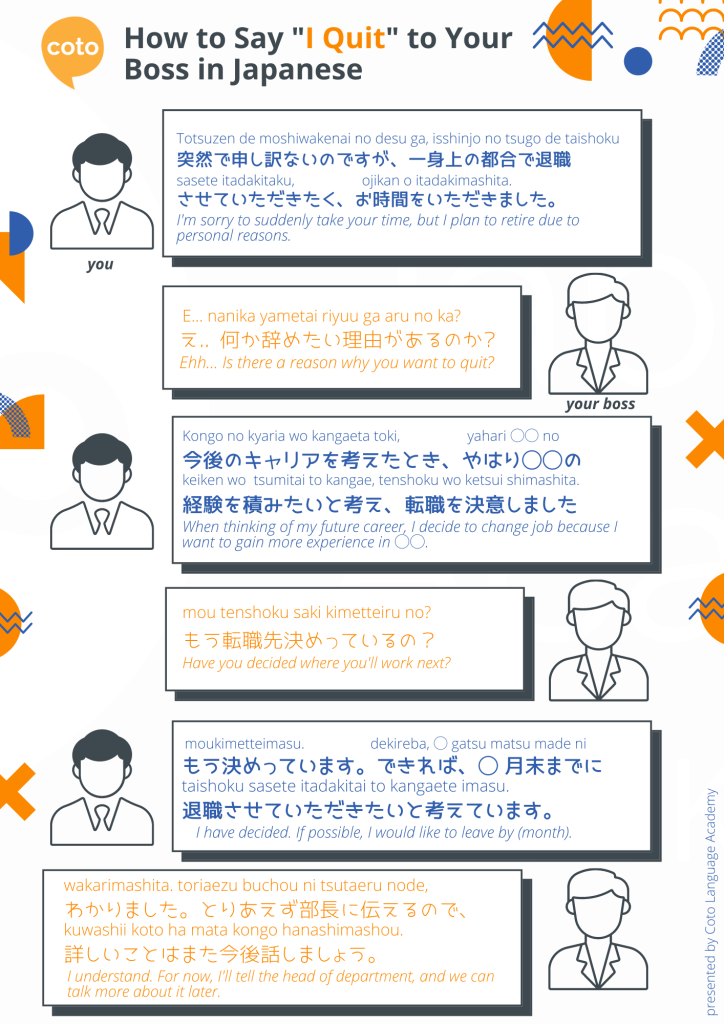
What to say to your coworkers
お忙しい中、私のためにお集まりいただき、ありがとうございます。
Oisogashii-chu, watashi no tame ni o atsumari itadaki, arigato gozaimasu.
Thank you for gathering for me while you are busy
When to use: You’re giving a goodbye speech to your coworkers
皆さまには大変お世話になりました。
Mina sama ni wa taihen osewa ni narimashita.
Thank you very much for your kindness.
本日を以て退職となります。これまでありがとうございました。最後まで気を抜かずにがんばりますので、よろしくお願いします。
Honjitsu o motte taishoku to narimasu. Kore made arigato gozaimashita. Saigo made ki o nukazu ni ganbarimasunode, yoroshikuonegaishimasu.
I will be retired from today. Thanks for everything so far. I will do my best until the end, so thank you.
When to use: You’re announcing your retirement on your last day.
What to cay to clients or business partners in Japan
私事で大変恐縮ですが、一身上の都合により◯月◯日を以て退社することになりました。
Watakushigoto de taihen kyoshukudesuga, isshinjō no tsugo ni yori ◯ tsuki ◯ hi o motte taisha suru koto ni narimashita
I am sorry for (bringing up) my personal affairs, but due to personal reasons, I will leave my company on ◯ Month ◯ Day.
今後の貴社の後任担当を、同僚の◯が担当させていただきます。
Kongo no kisha no konin tanto o, doryo no ◯ ga tanto sa sete itadakimasu.
My colleague ◯ will be in charge of your company’s successor in the future.
Things to submit before you quit your job in Japan
Your last day at your Japanese company should be focused on clerical procedures and goodbyes. You will have to return all the items rented or leased by your company. In particular, be sure to hand over documents and devices that contain confidential information. Typical things to return in a Japanese company include:
- Health insurance card or 健康保険被保険者証 (kenkohokenhihokenshasho). You can use your health insurance until your retirement date. You can also return it by mail.
- Company-supplied equipment or 会社支給の備品 (kaisha shikyuu no bihin)
- Employee ID or 社員証 (shain-sho)
- Company emblem 社章 (shasho)
- Business card or 名刺 (meishi)
- Work clothes or 作業着 (sagyo-gi)
- Business materials or 業務資料 (gyomu shiryo) and manuals
- Rented phones, laptops, computer, or car keys
Things to receive when you quit your job in Japan
Just as you are required to return certain documents and items, your company is also responsible for providing you with several important documents during the offboarding process.
- Employment insurance card or 雇用保険被保険者証 (koyohokenhihokenshasho)
Companies in Japan will often keep your employment insurance card, so make sure you don’t forget to receive it back.
- Pension book or 年金手帳 (nenkin techo)
This is a document certifying that you are registered for the Japanese welfare pension system. In general, pension handbooks are kept by the person themself, but a company may also store them to prevent loss.
- Withholding slip or 源泉徴収票 (genzenchoushu-hyo)
The withholding slip is a document that describes the amount of salary paid and the amount of tax paid for one year. It is often issued within one month of retirement.
- Turnover slip or 離職票 (rishoku-hyou)
This is a document to be submitted to Hello Work when applying for unemployment benefits. If you want to receive an unemployment allowance after retirement, ask the company to issue a turnover slip before you retire. If you have decided where to change jobs, you do not need to have it issued.
- Certificate of retirement or 退職証明書 (taishoku shomeisho)
Your new employer may want to prove that you have officially retired. A certificate of retirement can be received immediately from your company.
How to use your leftover paid time off in Japan
Under basic Japanese labor laws, companies are required to provide employees with at least 10 days of paid leave after they have worked for six consecutive months. If you’ve been with your company this long and have unused paid vacation days, it’s important to consider how to use them before your resignation.
One common approach is to schedule your paid leave before your official last working day. For example, if you give 30 days’ notice, and you have 10 days of paid leave left, you can use those 10 days toward the end of your notice period—effectively working for only 20 days.
Keep in mind that some companies allow you to “cash out” unused vacation days, though this is not common. Always check with your HR department or employee handbook for your company’s specific policy.
Other Japanese words related to quitting a job
| English | Japanese | Romaji |
| Retirement | 退職 | Taishoku |
| Retirement greeting | 退職のご挨拶 | Taishoku no goaisatsu |
| Retirement reason | 退職理由 | Taishoku riyu |
| At time of retirement | 退職時 | Taishoku-ji |
| Identification card | 身分証明書 | Mibun shomeisho |
| Health insurance card | 健康保険証 | Kenko hokensho |
| Commuter pass | 通勤定期券 | Tsukin teikiken |
| Uniform | 制服 | Seifuku |
| Seal | 印鑑 | Inkan |
| Quit your job | 仕事を辞める | Shigoto wo yameru |
Some tips to keep in mind before you quit your job in Japan
1. Keep things positive
Your immediate manager should be the first to hear about your intention to retire before anyone else in the workplace. They will most probably ask about the reason behind your decision.
This stage is important: always mention your future goals instead of expressing dissatisfaction in your workplace. Reasons for retirement aren’t always positive, but that doesn’t mean you have to make your exit messy. Do you want to make it about the company and less about your career plan and outlook? Attacking the company can trigger unwanted attention and scrutiny.
2. Reaffirm your intention of quitting your job
Clear and positive communication is key. If you’re a treasured employee and your boss isn’t ready to let you go, they might try to negotiate something. Always be prepared for a possible counter-offer. It can be a promotion, a salary increase or a bonus. If you’ve made up your mind, be firm about it and state that you’re not open to considering either option.
3. Remember that you are still working there
No matter what, you are still part of your company for at least another month. Don’t make any grudges, especially when they can affect your job change. What you want to do instead is to show sincerity to your company by giving top priority to work as usual while slowly preparing the handover materials.
Avoid revealing too much about your plans. Don’t boast to your coworkers. One way or another, they’ll find out where you’re going next, but for now, you can avoid any awkwardness by not mentioning the name of your next company.
Social insurance and tax after you resign from your job
When you retire, there are many external procedures related to your taxes. It may seem particularly difficult for the first time, but it’s all about getting the right tax support and filing your tax return accordingly.
If you retire in July, for example, you can submit a withholding slip to your new office, and they will make year-end adjustments instead. However, if you join a new company after the end of November, the procedure may not be completed by the end of the year, and you may not be able to make the year-end adjustment. In that case, you will need to file your tax return yourself.
What to do when you become lawfully unemployed in Japan
Sometimes, resigning from your job isn’t always part of the plan. There may be a time when you’re forced to quit your job. If you don’t have another company to join immediately, you will become officially unemployed in Japan.
A good thing is that, unless revoked, your working status is valid until the expiry date and you can stay in Japan until that time. However, you must notify the immigration office within 14 days after you leave your job. After 90 days, they may ask why you are not engaging in your activities.
Be careful not to mislead the Japanese immigration office about the primary reason you aren’t working. Looking for work, health leave, or going out on a re-entry permit are valid reasons, but lying can lead to revocation of your visa.
Interested in studying Japanese? Find out more about how we can help you by filling out the form below!
Want to study Japanese with us?
Want to work in Japan? Check out our work-related series:
- Japanese Work Culture: How is it Different from The West?
- Introduction to Business Japanese: Keigo
- How to Write a Japanese Resume (Rirekisho): Free PDF Template
- How to Get a Job in Japan as a Foreigner
- Common Japanese Job Interview Questions to Know
- How to Introduce Yourself in Japanese
- 9 Bilingual Recruitment Agencies in Japan
- 10 Trusted Job Hunting Websites in Japan
FAQ
What is the legal notice period to quit a job in Japan?
Under Japanese labor law, if you’re on an indefinite-term contract, you are legally required to give at least 2 weeks’ notice before quitting. However, many companies require 1 month in your employment contract, so check your terms.
What if my company refuses to let me quit?
Your employer cannot legally prevent you from resigning. If issues arise, you can contact Hello Work, a local labor office, or consult a labor union or legal expert.
Can I quit a job in Japan immediately?
Only in cases of harassment, mental health issues, or legal violations can you quit without notice. In these cases, consult a labor lawyer or support center.
Can I use paid leave before quitting?
Yes. You are legally entitled to use your accrued paid leave (有給, yuukyuu) before your last day, unless otherwise stated in your contract.
What is the difference between 退職届 (taishoku todoke) and 退職願 (taishoku negai)
退職願 (taishoku negai) is a polite request to resign, while 退職届 (taishoku todoke) is a formal and final notice of resignation submitted after approval.
